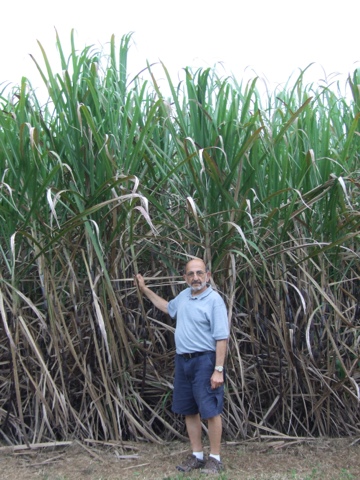This morning we went to Tjapukai, an Aboriginal cultural center. It was arranged so that we moved from area to area to see different things. First there was a didgeridoo demonstration. The performer explained how to make a didgeridoo from a tree. Then he demonstrated the different sounds he could make; deep or high or howling. And in order to play he had to learn how to continually breathe in and blow out into the mouth of the instrument. He played several songs for us.
Next there was a theater for a Creation Story. It was done with film, actors, lights and special effects. The dance show was in another place. Here the performers danced in ways that evoked emus, kangaroos, and other animals. The dances were done to the music of a didgeridoo with sticks and boomerangs for rhythm. There was a lot of humor in all of the performances. They also gave a fire starting demonstration.
They talked about weapons and bush food and medicine. Then there was a place to try our luck with a boomerang and spear. We both tried the boomerang with not too much success. Samson tried the spear, but it wasn't just throwing a spear at a target. They used a device that extended the length of the spread and thus the power that could go into the throw. Pretty difficult.
After that we drove downtown and looked at The Tanks. They were oil storage tanks that have been converted to art spaces. There was a gallery and a theater, but neither was open. We drove down to look at the Cairns Railway Station and then left Cairns.
We stopped at The Boulders by Mt Bartle Frere, the tallest peak in Queensland. We walked along a fast moving stream that went over giant boulders into a series of pools. Then we went to Josephine Falls, that also came from that mountain into large plunge pools.
We are in sugar cane country and we were curious about its growth and processing. So our next stop was the Australian Sugar Growers Museum. The museum was in transition, but was able to answer our questions. Sugar is grown from pieces of cane, called billets, that are placed in furrows in the ground, fertilized and covered. When it's harvested, it is cut and put into cage like containers and taken to the mill right away. There are small gauge railroad tracks all through here that are used to transport the containers. Some growers use trucks now, too. In the past the cane fields were burned to stop disease spreading to the cane cutters, but with modern machine cutting, that isn't necessary. They start harvesting in June, so we are too early to see a sugar mill in action.
Pictures - Mural at Tjabukai, Didgeridoo playing, Dancers, Fire starting, Blowing on the fire, Jeanne with boomerang, Samson by cane field







No comments:
Post a Comment